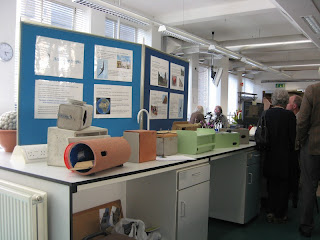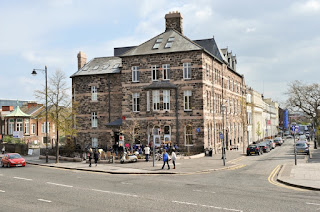This year we attended the 94th Conversazione of the CNHS, at the Zoological Museum, Cambridge. This event attracts a wide variety of natural history organisations both large and small.
Before going, we did not know what to expect, but we ended up engaging with many people who now know more about how to help Swifts than they previously did. And we will almost certainly do it again for the 95th Conversazione next year.
Thank you to Clarke Brunt who suggested we went, and who was also exhibiting his cacti and carnivorous plants, and to Vida Newell, Rowena Baxter, Bill Murrells, Judith Wakelam and Helen Hodgson all of whom helped man the display.
 |
| The AfS display with both commercial and DIY Swift boxes and Swift bricks, "I am a Swift" booklets, a Swift mobile and an attraction call player. Photo Monica Frisch |
 |
| Dick Newell demonstrates the operation of a Cheng Sheng attraction call player. Photo Monica Frisch |
Before going, we did not know what to expect, but we ended up engaging with many people who now know more about how to help Swifts than they previously did. And we will almost certainly do it again for the 95th Conversazione next year.
Thank you to Clarke Brunt who suggested we went, and who was also exhibiting his cacti and carnivorous plants, and to Vida Newell, Rowena Baxter, Bill Murrells, Judith Wakelam and Helen Hodgson all of whom helped man the display.








